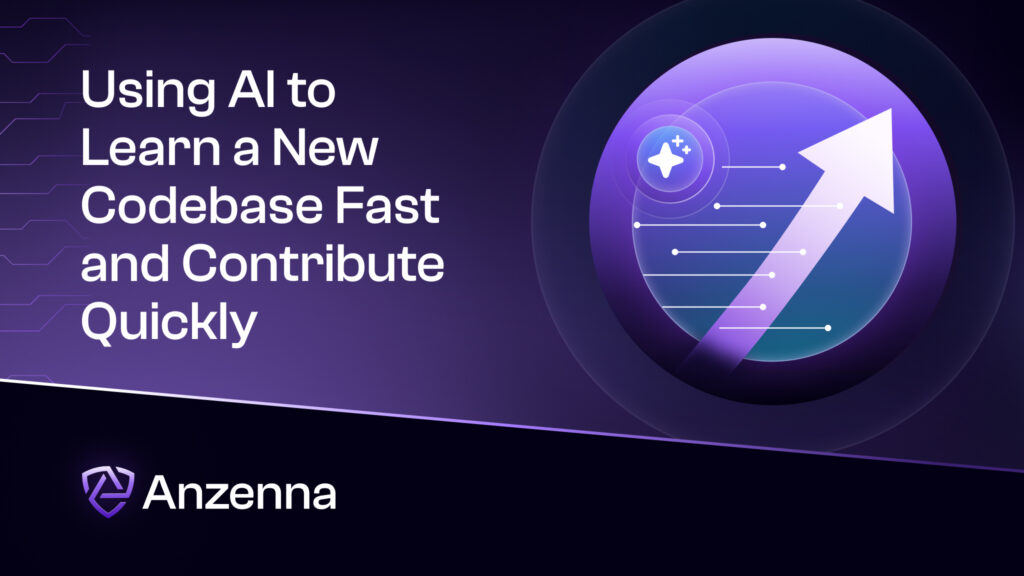In this age of AI, it’s easier than ever to expand your abilities beyond just your background. Having started working with Anzenna just over a week ago, I can confidently say I would not have been able to ramp up as quickly without Anzenna being an AI first and forward thinking company.
I’ve joined teams before where learning a large, distributed system took weeks of slow exploration and trial and error. At Anzenna, I was contributing meaningful code in days, and that wasn’t because I knew the stack ahead of time. It was because I learned to use AI as a force multiplier for onboarding.
The Challenge: Understanding a Complex Codebase Fast
Anzenna’s mission is ambitious: protecting enterprises from insider threats through proactive, privacy aware AI. Behind that mission lies a sophisticated platform with dozens of interconnected services handling data ingestion, detection, and remediation pipelines.
For a newcomer, it’s a lot to absorb: microservices written in multiple languages, integrations with identity providers, and layers of analytics logic. Traditionally, you’d clone the repo, start grepping around, and hope to piece together the mental model over a few weeks.
I wanted to go faster, not by cutting corners, but by letting AI handle the parts of onboarding that used to be slow and manual.
Using AI as a Codebase Co-Pilot

Here’s how I approached the first few days.
1. Ask AI for the “map” before walking the terrain
Instead of diving straight into files, I used an LLM to summarize repository
structure. I asked questions like:
“Given this directory tree, what are the core modules and how do they
interact?”
“What are the major entrypoints or API layers?”
That gave me a quick architectural overview, not perfect, but enough context to
know where to look next.
2. Trace real flows, not just read code
I then used AI to trace actual execution paths for features. For example:
“When a detection alert is generated, which functions handle escalation?”
The AI walked through call chains, showing me which services published which events. It wasn’t guessing; it was helping me form mental links across files.
3. Summarize design patterns and conventions
Every codebase has its “unwritten rules,” like naming conventions, dependency injection styles, and error handling patterns. Instead of discovering these through failed code reviews, I asked:
“What patterns do you see repeated across modules?”
“How are retries and backoffs implemented across services?”
That gave me a living guide to “how we build things here,” faster than any wiki.
4. Use AI for comparison, not generation
I wasn’t asking AI to write features for me, I asked it to compare my understanding. If I summarized a subsystem, I’d prompt:
“Does this description of the alert processing pipeline match what’s implemented?”
That back and forth revealed blind spots early, before I wasted time chasing wrong assumptions.
5. Validate everything with humans
AI gave me speed, but the team gave me correctness. I always checked my findings with colleagues, and that sparked better discussions. Instead of asking “What does this file do?” I could ask:
“Is this event driven approach chosen for scalability or historical reasons?”
That level of context only emerges when you’ve already explored the surface.
Reflections on AI Accelerated Onboarding
The biggest lesson: AI can turn the onboarding curve from weeks into days if used deliberately.
Some reflections:
- AI is best at reducing "unknown unknowns". It surfaces structure, terminology, and relationships before you even know what to search for.
- It thrives when you ask precise questions. "Show me where this is handled" beats "Explain the code."
- You still need human mentorship. Context, priorities, and architectural trade offs live in people's heads, not in the repo.
- Document as you go. Every AI insight that's accurate should become part of the permanent knowledge base.
When you combine those principles, AI isn’t replacing onboarding, it’s supercharging it.
Looking Ahead

It’s exciting to be at a company that not only builds with AI but thinks with it, from the way we design systems to how we onboard new teammates. That mindset turns AI from a buzzword into a productivity tool you can feel every day.








